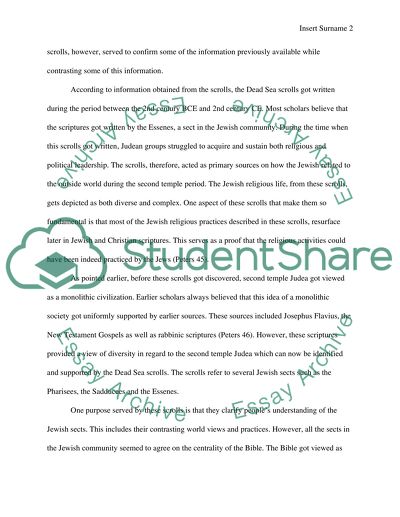Cite this document
(“Dead Sea Scrolls : Judaism & Christianity Essay”, n.d.)
Dead Sea Scrolls : Judaism & Christianity Essay. Retrieved from https://studentshare.org/religion-and-theology/1498417-dead-sea-scrolls-judaism-christianity
Dead Sea Scrolls : Judaism & Christianity Essay. Retrieved from https://studentshare.org/religion-and-theology/1498417-dead-sea-scrolls-judaism-christianity
(Dead Sea Scrolls : Judaism & Christianity Essay)
Dead Sea Scrolls : Judaism & Christianity Essay. https://studentshare.org/religion-and-theology/1498417-dead-sea-scrolls-judaism-christianity.
Dead Sea Scrolls : Judaism & Christianity Essay. https://studentshare.org/religion-and-theology/1498417-dead-sea-scrolls-judaism-christianity.
“Dead Sea Scrolls : Judaism & Christianity Essay”, n.d. https://studentshare.org/religion-and-theology/1498417-dead-sea-scrolls-judaism-christianity.


